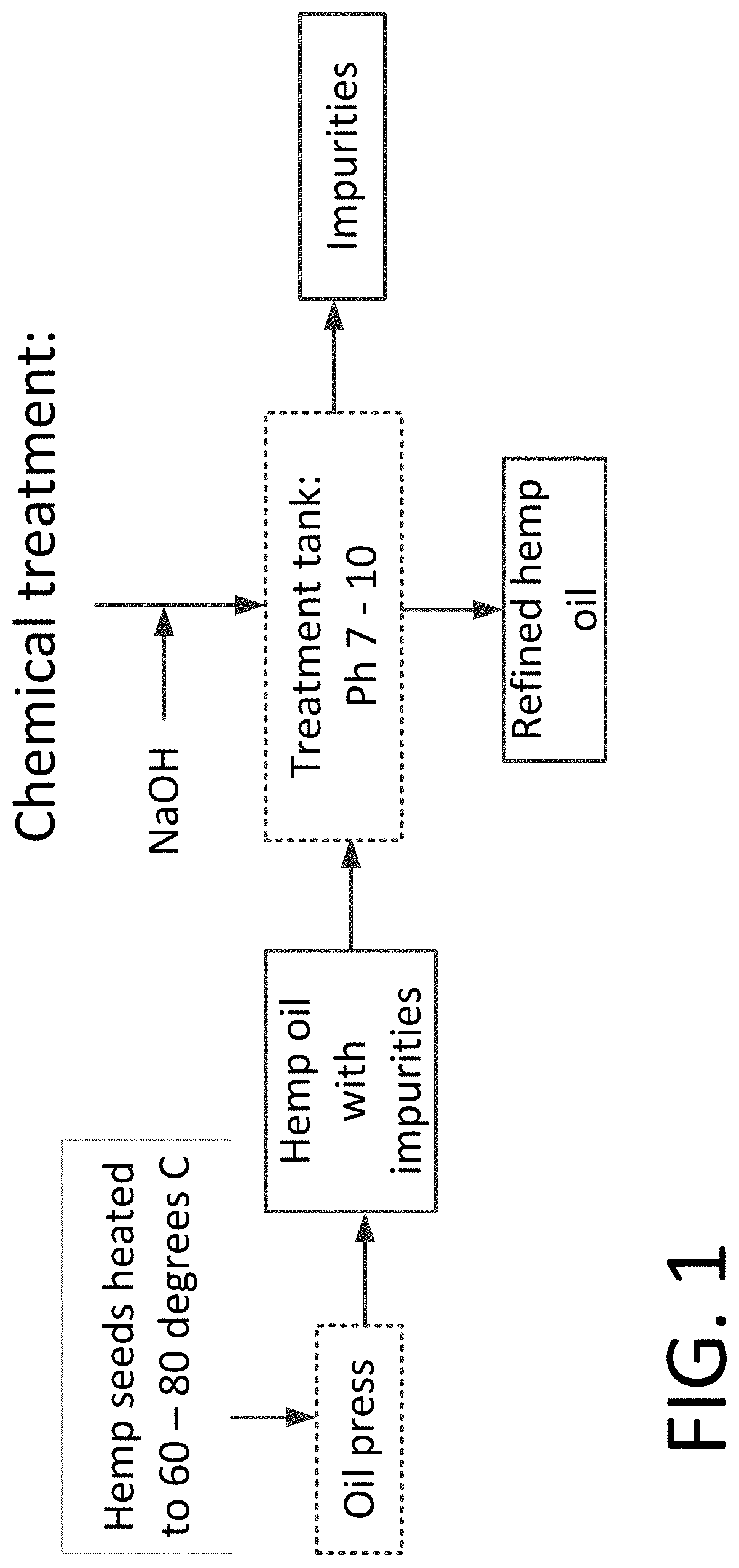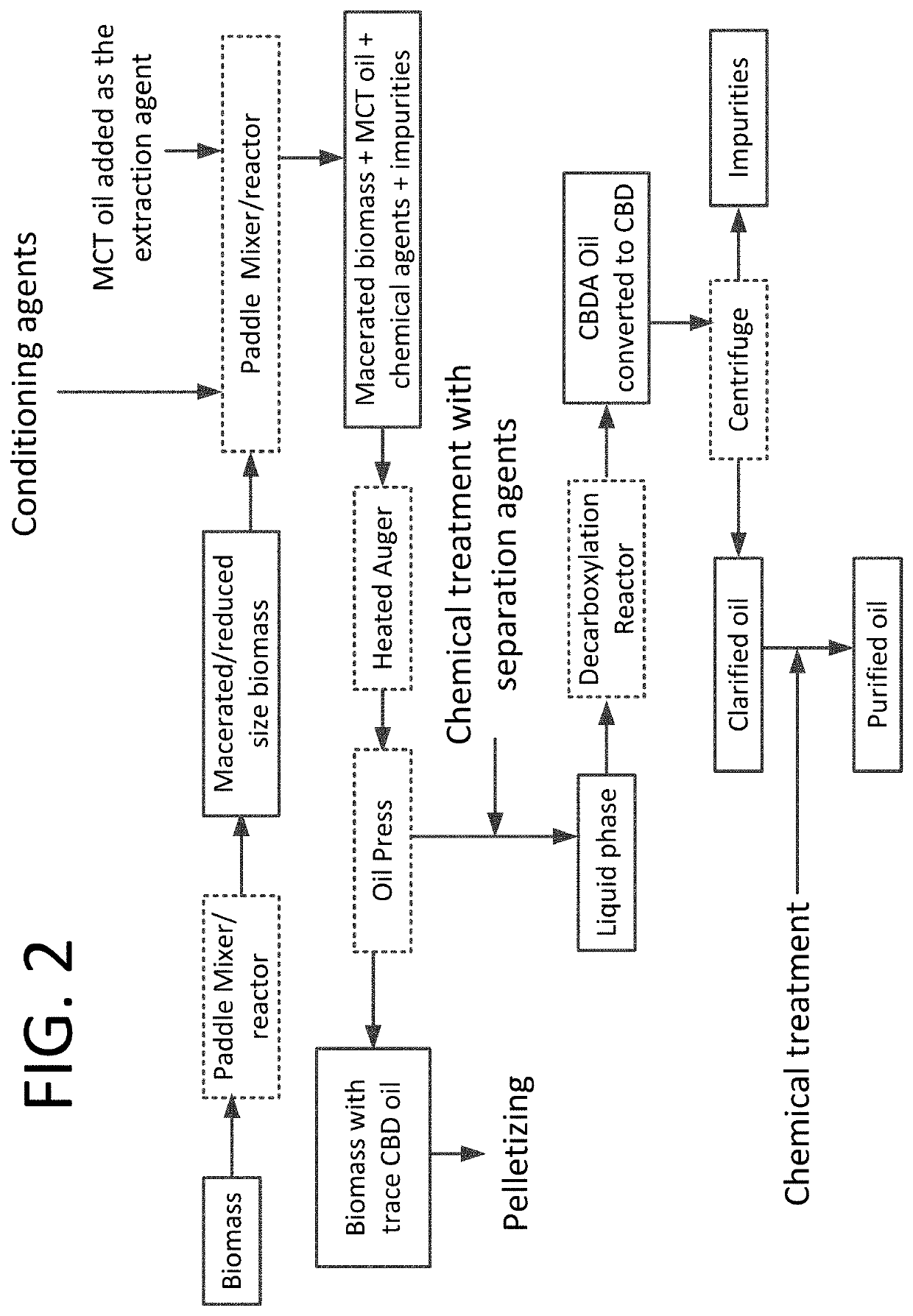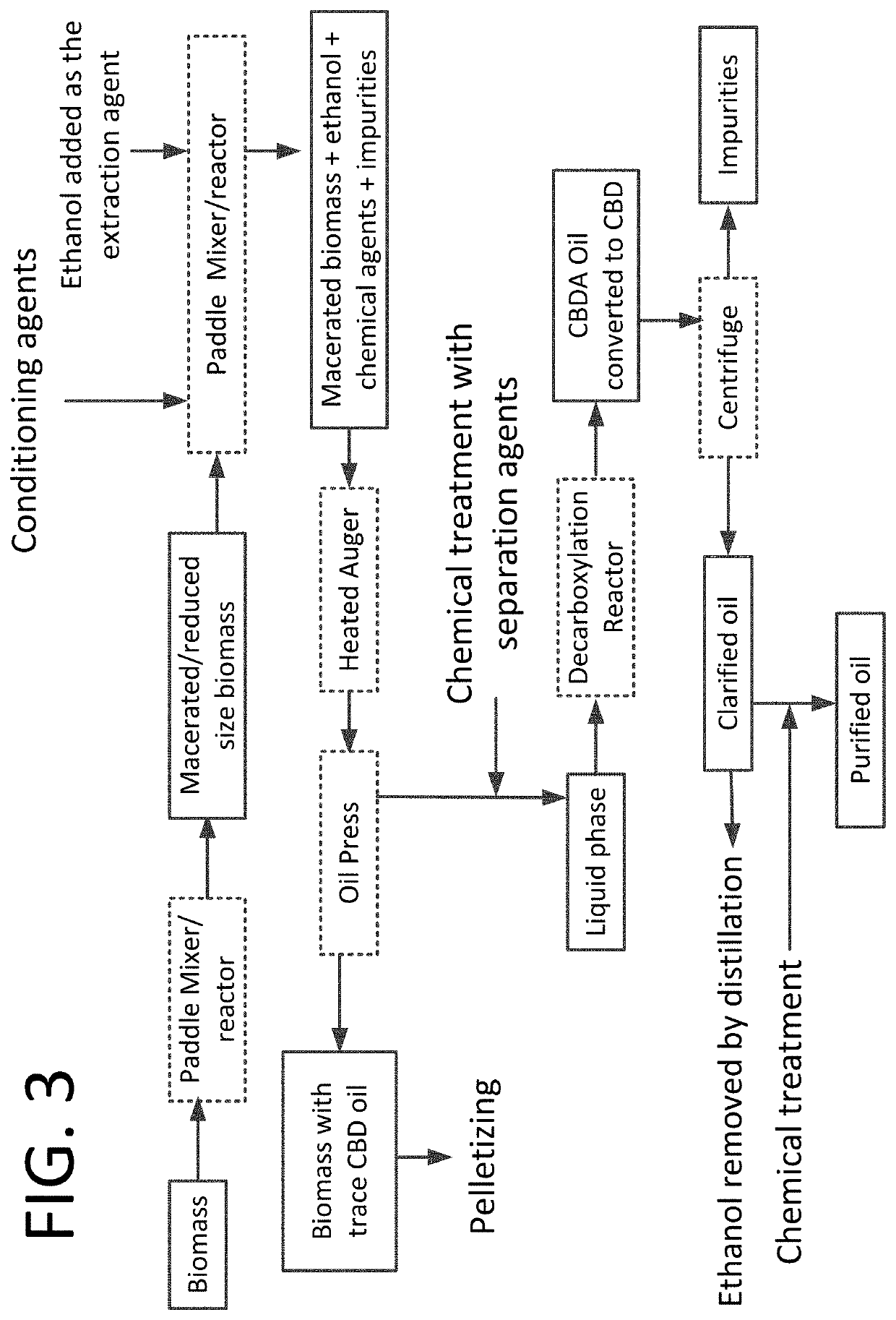Process for manufacturing cannabidiol
a technology of cannabidiol and manufacturing process, which is applied in the direction of solvent extraction, separation process, organic chemistry, etc., can solve the problem of flammability hazards
Active Publication Date: 2021-02-16
SOIL NET
View PDF21 Cites 2 Cited by
- Summary
- Abstract
- Description
- Claims
- Application Information
AI Technical Summary
Benefits of technology
The present invention relates to a process for producing cannabidiol, which involves reducing the size of biomass raw material and infusing it with an extraction agent to generate a treated biomass stream. The treated biomass stream is then separated into a solid and liquid phase stream, where the cannabidiolic acid component in the liquid phase stream is converted to cannabidiol. The resulting cannabidiol stream is then clarified to remove impurities. The technical effects of this process are improved yields of cannabidiol with reduced impurities.
Problems solved by technology
The current processes used for manufacturing cannabidiol require expensive steps involving removal of undesirable materials at high temperature and pressure as well as a filtration step that requires a high purity alcohol that needs to be distilled for reuse; a step that presents a flammability hazard.
Method used
the structure of the environmentally friendly knitted fabric provided by the present invention; figure 2 Flow chart of the yarn wrapping machine for environmentally friendly knitted fabrics and storage devices; image 3 Is the parameter map of the yarn covering machine
View moreImage
Smart Image Click on the blue labels to locate them in the text.
Smart ImageViewing Examples
Examples
Experimental program
Comparison scheme
Effect test
examples
[0061]The table below presents test results in the feed materials and the materials produced in the various steps of the process. As can be seen, over 92% of the initial CBDA content of 4.7% is converted into CBD in the clarified oil. The final THC level is below the legal limit. It is noted that terpenes are not present in the final product having been removed with the impurities in the process.
the structure of the environmentally friendly knitted fabric provided by the present invention; figure 2 Flow chart of the yarn wrapping machine for environmentally friendly knitted fabrics and storage devices; image 3 Is the parameter map of the yarn covering machine
Login to View More PUM
| Property | Measurement | Unit |
|---|---|---|
| size | aaaaa | aaaaa |
| particle size | aaaaa | aaaaa |
| particle size | aaaaa | aaaaa |
Login to View More
Abstract
A process for producing cannabidiol from hemp and cannabis plants is disclosed. The steps of the process include the steps of: plant conditioning and size reduction, infusing with an extraction agent, separating a solid biomass and a liquid phase, treating the liquid phase with a removal agent, decarboxylation, removal of impurities; and color removal. The resulting cannabidiol conversion efficiency is over 90% and a TCH content within the legal limits for commercial cannabidiol.
Description
FIELD OF THE INVENTION[0001]The present invention relates generally to the field of manufacturing cannabidiol, also referred to as CBD oil. Cannabidiol has become the hot new product in states that have legalized medical marijuana. The non-intoxicating marijuana extract is being credited with helping treat a host of medical problems, e.g., epileptic seizures, anxiety, inflammation and sleeplessness.BACKGROUND OF THE INVENTION[0002]Cannabidiol, or CBD oil, is generally manufactured from the hemp and cannabis plants. The current processes used for manufacturing cannabidiol require expensive steps involving removal of undesirable materials at high temperature and pressure as well as a filtration step that requires a high purity alcohol that needs to be distilled for reuse; a step that presents a flammability hazard. The process of the present invention does not rely on any of these hazardous, complex and expensive steps and is less expensive and safer to carry out.SUMMARY OF THE PRESEN...
Claims
the structure of the environmentally friendly knitted fabric provided by the present invention; figure 2 Flow chart of the yarn wrapping machine for environmentally friendly knitted fabrics and storage devices; image 3 Is the parameter map of the yarn covering machine
Login to View More Application Information
Patent Timeline
 Login to View More
Login to View More Patent Type & Authority Patents(United States)
IPC IPC(8): C07C37/00A23K10/30B01D11/02A23K20/111A23K40/10
CPCC07C37/004A23K10/30A23K20/111A23K40/10B01D11/0288B01D11/0296A23D9/007A23V2002/00A23K10/37B01D11/0257C07C37/50C11B1/102C07C2601/16Y02P60/87C07C39/23A23V2250/194A23V2250/2132
Inventor ROA-ESPINOSA, AICARDOPEREZ-MAHECHA, JOAQUIN CAMILOPHAM, MICHELLE HJEPSON, CHARLES KEVIN
Owner SOIL NET
Features
- R&D
- Intellectual Property
- Life Sciences
- Materials
- Tech Scout
Why Patsnap Eureka
- Unparalleled Data Quality
- Higher Quality Content
- 60% Fewer Hallucinations
Social media
Patsnap Eureka Blog
Learn More Browse by: Latest US Patents, China's latest patents, Technical Efficacy Thesaurus, Application Domain, Technology Topic, Popular Technical Reports.
© 2025 PatSnap. All rights reserved.Legal|Privacy policy|Modern Slavery Act Transparency Statement|Sitemap|About US| Contact US: help@patsnap.com



